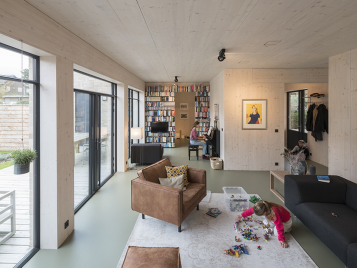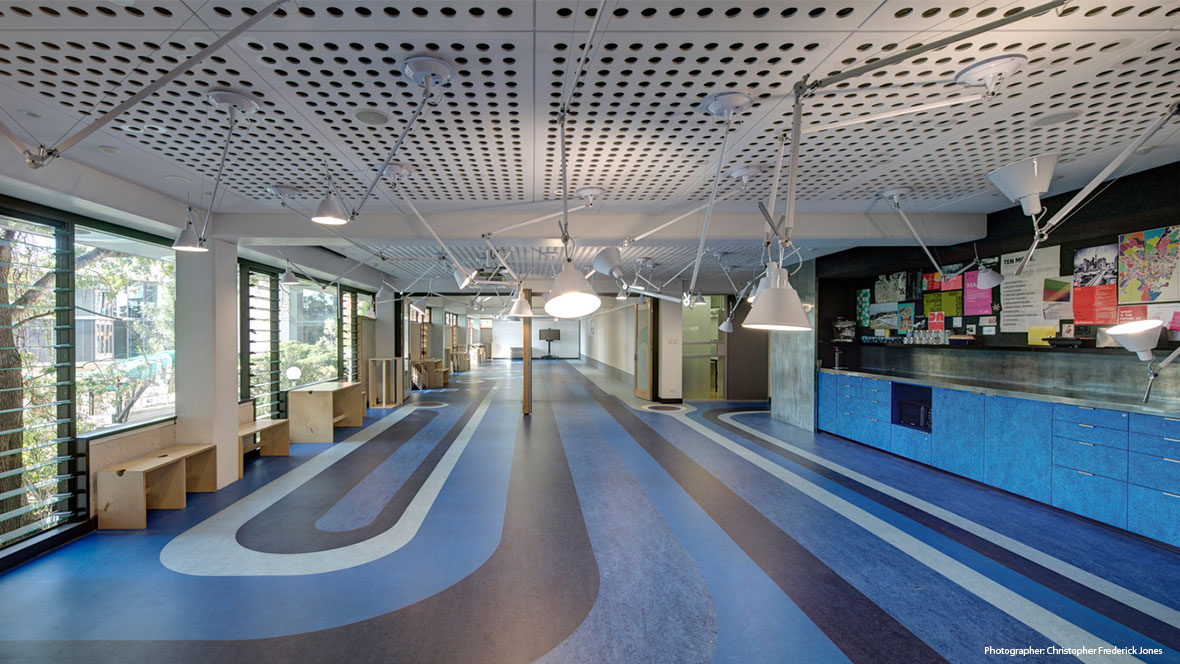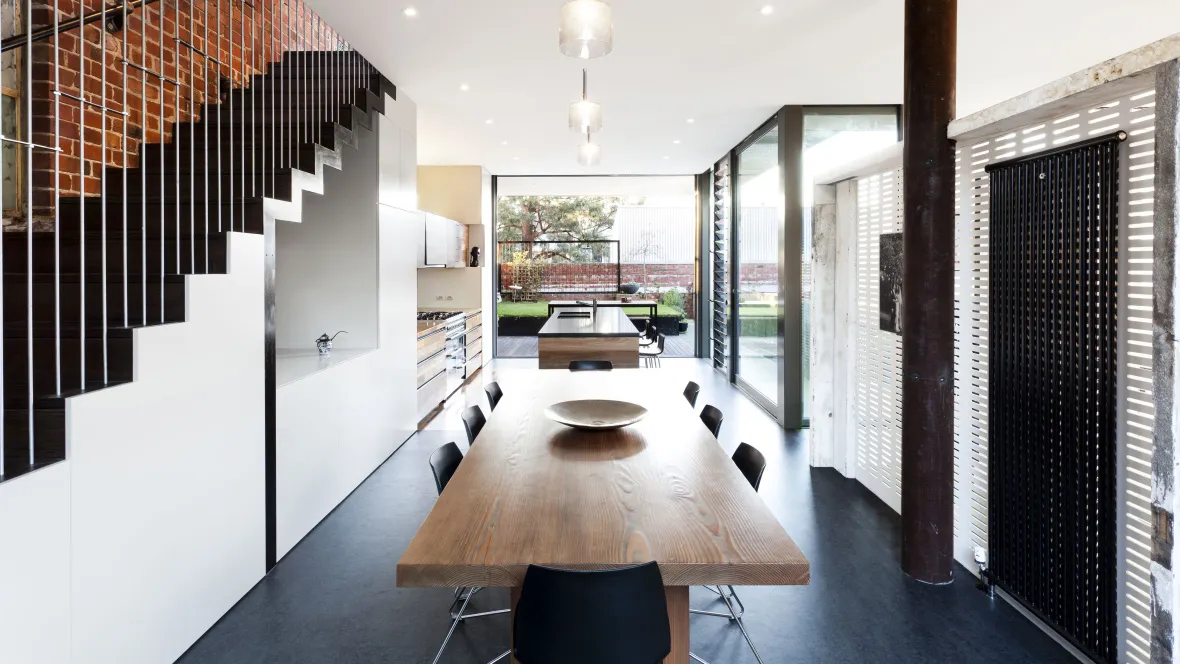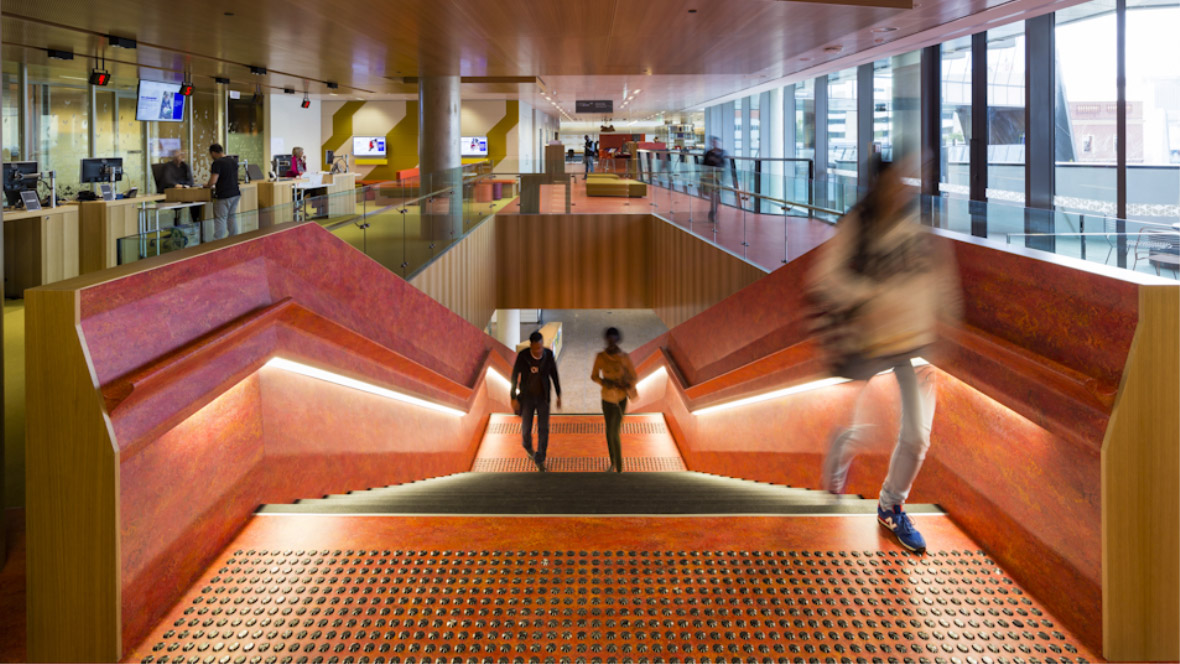Our Marmoleum linoleum flooring doesn't need a wax sealer. It features a factory-applied Topshield Pro finish, ensuring high performance and a ready-to-use floor.
Learn more about our Topshield pro finish
Linoleum Flooring FAQ
Explore our comprehensive FAQ page dedicated to all your queries about linoleum flooring.
-
What is linoleum flooring?
Linoleum flooring is a resilient floor covering made from natural raw materials such as linseed oil, limestone, wood flour, pine tree rosin, pigment, and jute. Renowned for its eco-friendliness, linoleum offers a sustainable flooring option for various spaces.
Available in sheet, tile, and plank formats, linoleum flooring provides versatile design options. Explore aquajet designs, acoustical enhancements, and static control features to tailor your flooring to specific needs. -
Where to buy linoleum flooring?
Forbo Flooring Systems, a leading European manufacturer, supplies linoleum flooring to numerous retailers across Australia and New Zealand. To locate your nearest Forbo supplier, simply fill out our distributor locator form, and we'll promptly connect you with the closest retailer.
Find your local supplier form -
Does linoleum need to be wax sealed?
-
How to repair linoleum flooring?
In the rare instance of cigarette burns, small gouges, or scratches on linoleum flooring, repairs can be made by filling them with a paste. Simply scrape the surface with a paint scraper to create fine powder, mix it with white glue to form a paste, and apply.
For detailed instructions on repairing Marmoleum, download our technical bulletin document below
Technical Bulletin: How to repair Marmoleum guide -
How long does linoleum floors last?
Linoleum floors are particularity very durable, with Marmoleum boasting an average life expectancy of 10-25 years* in large commercial projects. Thanks to its natural timber/rosin ingredients, Marmoleum continues to harden with age and can last over 40 years!
*When cleaned and maintained in accordance with recommended guidelines. -
What is the difference between linoleum and Marmoleum?
Marmoleum is Forbo's brand of linoleum flooring, distinguished by its modern Topshield Pro finish, which offers proven performance and durability
-
How to install linoleum flooring?
We always recommend our Marmoleum products are installed by certified installers to ensure a professional finish and lasting floor performance.
Locate your closest certified flooring installer here
Full installation guides can also be downloaded below:
Forbo Marmoleum sheet installation guide
Forbo Marmoleum modular tiles installation guide -
What Marmoleum colours do you stock locally?
Locally, we stock a wide range of popular colours of Marmoleum to choose from, available in standard 2.5mm sheet, modular tiles, as well as acoustic and Electro Static Discharge formats.
View our Australian Stocked Product Portfolio, Marmoleum section
Please note: Australian stocked colours may change without notice, whilst Forbo Flooring Systems Australia does its best to ensure that the contents of this Australian stocked product portfolio are accurate at the time of publication, please contact your local Forbo representative or call us on 1800 224 471 to confirm stock.
-
What is the slip rating classification for Marmoleum?
Marmoleum achieves an R10,P3* slip rating.
*Slip rating results are based on independent laboratory testing on a new sample. On-site testing results can often be highly variable due to site-specific conditions. Forbo cannot be held liable for site conditions and the variability in test results. For sustainable slip resistance in wet environments, a particle-based enhanced safety floor in accordance with EN 13845 should be used.
For wet areas, we always recommend a dedicated safety floor
You can download our marmoleum slip test below:
Linoleum download centre -
What is linoleum flooring made of?
Flax seed oil, wood flour, pine rosins, jute, limestone and pigments
Linoleum flooring is a resilient floor covering made from natural raw materials such as linseed oil, limestone, wood flour, pine tree rosin, pigment, and jute. Renowned for its eco-friendliness, linoleum offers a sustainable flooring option for various spaces.
-
What is drying room yellowing and when will it disappear?
A yellow tint can sometimes appear on the surface but it's an easy fix!
As all linoleum completes its maturing, a temporary, and variable natural phenomenon occurs which may give the product a yellow tint.
Although this phenomenon has been present ever since the invention of linoleum in 1863 the chemical reasons for it are still not fully understood and research continues.
However, this isn't permanent and is an easy fix! Simply expose the product to either natural or artificial light to allow this tint to disappear and the true colour of Marmoleum will develop.” Yellowing is related to the natural linseed oil and usually only occurs on lighter colours in blue, grey and greens.
For further information, download our:
Technical Bulletin: Drying room yellowing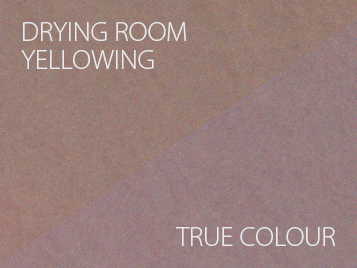
-
Do you examples of Marmoleum flooring installed in Australia?
Yes! Forbo Flooring Systems Australia have supplied Australian commercial projects and homes with linoleum flooring since 1961! Marmoleum flooring has been installed all around Australia in schools, universities, hospitals, commercial offices, public buildings and residential homes! You can view all of our Marmoleum case studies here
-
Does Marmoleum comply with BCA/NCC Fire standard?
Yes, All of our Marmoleum complies with BCA/NCC C1.10
Building Council Australia requires a critical radiant flux (CRF/CHF) >4.5kw/m2 and a smoke development of less than 750% per minute.
You can find these values in our ISO 9239.1 fire test report which is available to download in our download centre:
Linoleum download centre -
Do I need to weld Marmoleum floor covering?
The decision to weld Marmoleum is a purely aesthetic decision.
Marmoleum does not shrink over time when properly installed. That means welding, in the majority of cases, is not required.
A tight edge butted join will provide a secure and serviceable join for general purpose locations. For healthcare and specific location requirements, welding using our heat welding system may be the most appropriate option.
Click here for more information -
Can you cove Marmoleum?
Yes! You can either cover on-site or order pre-made coving
There are two methods to cove our linoleum flooring:
Border cove and pre-made coving available called Cove Ezi.
Cove-Ezi is fabricated locally with the same dye lot material as the main flooring finish to prevent any colour batch variation.
For further information about Cove-ezi pre-made coving
Visit our Marmoleum installation & Floor Care page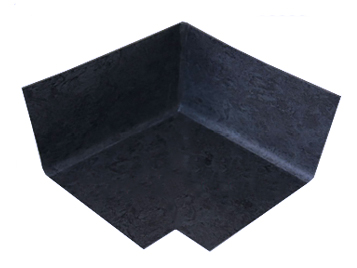
-
How to clean Marmoleum flooring?
Cleaning Marmoleum is easy!
Forbo’s linoleum flooring, Marmoleum are easy to clean and maintain, thanks to Topshield pro that requires no initial maintenance or polymer application and can be repaired or refreshed in cases of accidents or after years of intensive use, and thus creating a floor that demonstrates a lasting performance over time.
With the correct cleaning regime, our Marmoleum floor coverings will not harbour allergens or house dust mites.
Forbo recommends using an effective, pH neutral all-purpose floor cleaner such as Forbo's monel, which provides a matte finish that protects all vinyl, linoleum, cork, laminate and timber floors. See the difference here
Monel cleans and protects, lightly dabbed on a cloth it can be used to fix scratches, blemishes, and scuffs.
Forbo Monel pH Neutral Floor Cleaner Brochure
Forbo Marmoleum cleaning & maintenance guide
Find your local Monel stockist
In addition, all newly laid floors should be covered and protected from all other trades during the contract with a suitable non-staining protective covering. Use protective feet on chairs and tables to reduce scratching. Castor wheels should be of soft material suitable for resilient floor coverings (according to EN425)Cleaning Marmoleum video
-
Can Marmoleum be used with underfloor heating?
Yes! Marmoleum can be installed on heated slabs
The requirements for the installation of all resilient flooring products to subfloors incorporating under floor heating are detailed in AS 1884:2021 Floor coverings - Resilient sheet and tiles - Installation practices.
For further information, download our guidance note:
Installing over underfoot heating - Forbo Flooring Factsheet